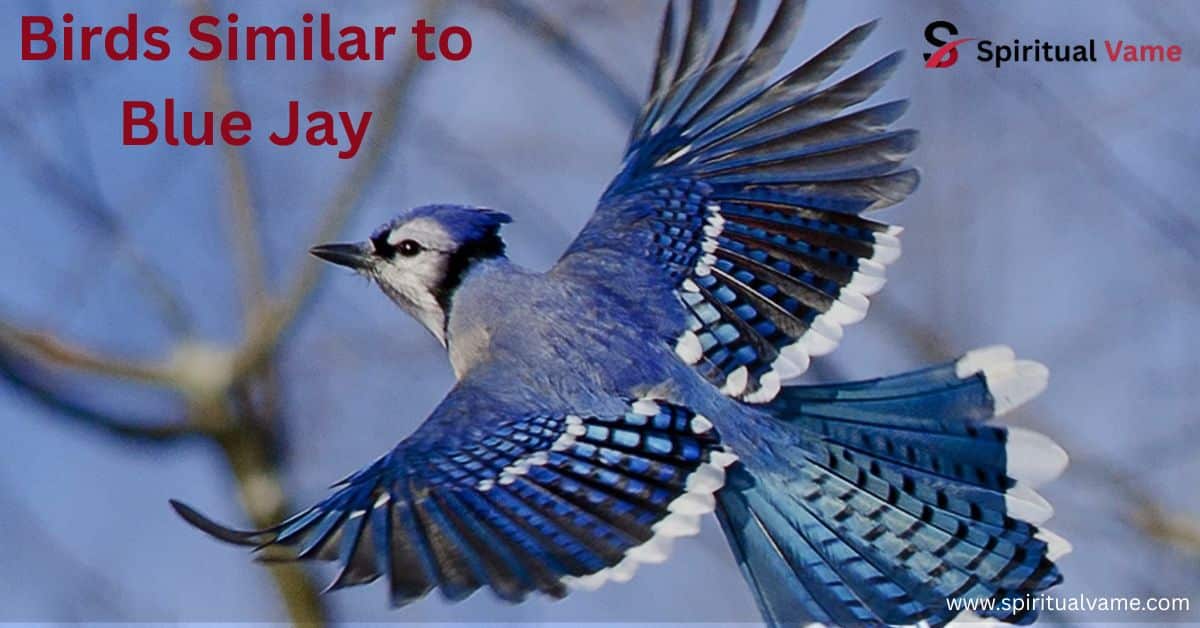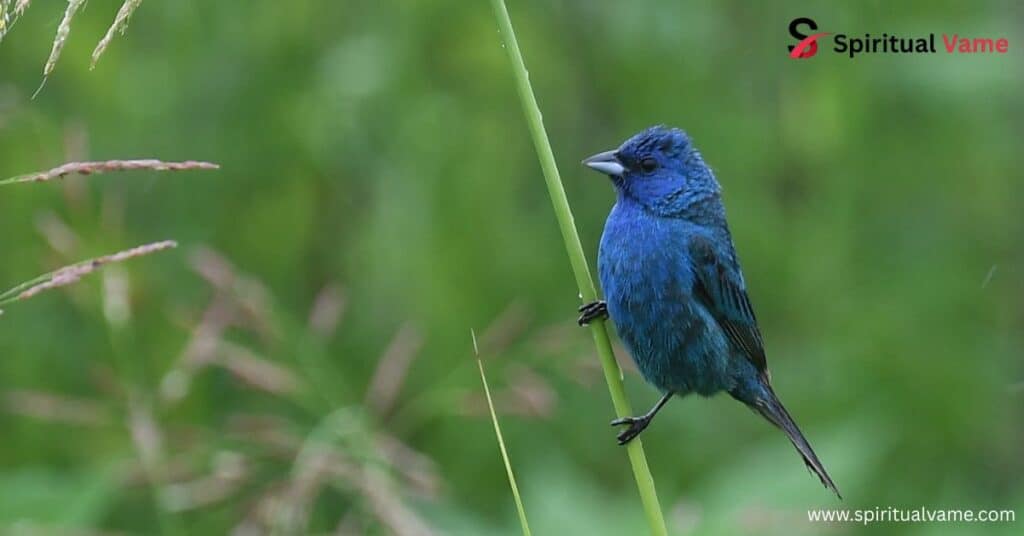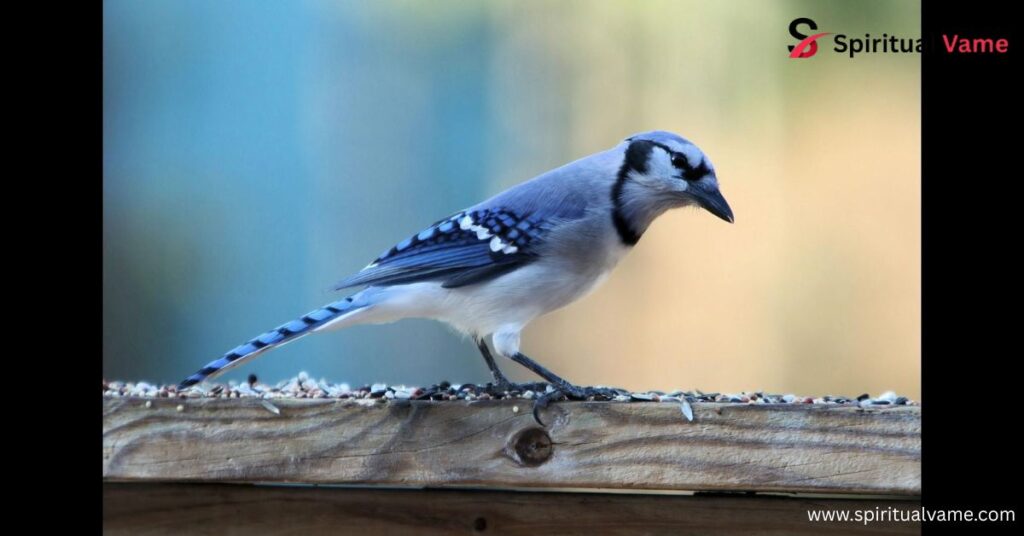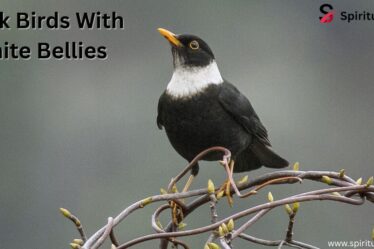
Many people in the U.S. are familiar with the Blue Jay, known scientifically as Cyanocitta cristata. It is one of the most recognizable perching birds with its bright blue plumage, black markings, and loud call. But did you know there are other birds in the corvidae family that look very similar? These birds, called jays, can be found across North America, and while they share similarities, each has its own unique traits.
From the bold crest of the Steller’s Jay to the soft gray and blue tones of the Canada Jay, these jays offer a beautiful variety of colors and behaviors. All are part of the passeriformes order, which includes most songbirds. Jays are known for their intelligence, complex calls, and role in spreading seeds. Understanding their habitats, diet, and behaviors can help you tell them apart and appreciate their role in nature.
Types of Jays: Blue Jay
The Blue Jay, or Cyanocitta cristata, is native to the eastern and central parts of the U.S. This bird has a strong personality—it’s loud, smart, and sometimes aggressive at feeders. Its plumage is bright blue with white and black patterns, a sharp black necklace, and a noticeable crest. The beak is strong and pointed, perfect for cracking nuts and seeds. Blue Jays are omnivorous, eating insects, nuts, seeds, and even small animals.
Their range covers forests, parks, and suburban areas where they often nest in tall trees. These birds are known for mimicking hawk calls and warning other birds of predators. The Blue Jay is a vital part of the ecosystem because it helps spread acorns and other seeds, encouraging new tree growth. Its appearance is striking, making it a favorite among bird watchers.
California Scrub-Jay

The California Scrub-Jay has deep blue feathers on its head, wings, and tail with a pale gray chest and belly. Unlike the Blue Jay, it lacks a crest, and its coloring is less detailed. It has a more casual, rugged look and a slightly curved beak. Found mostly along the West Coast, especially in oak woodlands and suburban areas, this bird has a noisy, raspy call and is often seen hopping through bushes.
This bird is part of the Aphelocoma coerulescens species. It’s smart and curious, often caching food just like the Blue Jay. They are granivores and also eat insects and fruits. The California Scrub-Jay is bold around humans, often visiting feeders and backyards. Though similar in size to the Blue Jay, its plumage and behavior are different enough to set it apart if you know what to look for.
Steller’s Jay
With its dark blue body and dramatic black crest, the Steller’s Jay is one of the most striking jays in North America. This bird lives in the forests of the Western U.S., especially mountainous areas like the Rockies and the Cascades. The Steller’s Jay, part of the Cyanolyca turcosa group, is bold and loud, often seen hopping around campsites looking for food scraps.
Its plumage is darker than a Blue Jay, and the black head sets it apart. The bird’s call is harsh, and it’s known for imitating other birds and animals. This songbird is an omnivore, eating everything from seeds to insects. Though its shape and wingspan may resemble a Blue Jay, the color difference is the easiest way to tell them apart.
Pinyon Jay
The Pinyon Jay, or Gymnorhinus cyanocephalus, is a bird of the dry Southwest. Its feathers are a dusty blue all over, and it doesn’t have a crest. It lives in pinyon-juniper woodlands and is often found in large flocks. These birds are very social and intelligent, working together to store food.
They have a shorter tail and more compact body than the Blue Jay. Their diet includes mostly pinyon pine seeds, making them true granivores. The Pinyon Jay might not be as flashy, but its flocking behavior and pale blue plumage make it easy to recognize once you’re familiar.
Canada Jay
The Canada Jay is also known as the “Whiskey Jack,” a friendly bird from northern forests. Unlike the Blue Jay, its coloration is mostly gray and white, with soft, fluffy feathers. It lives in boreal forests across Canada and some northern U.S. states. It’s used to cold weather and stores food for winter.
This bird, a member of the corvidae family, lacks a crest and has a quiet, whispery call. It often follows hikers and campers, hoping for a snack. Though it doesn’t look much like the Blue Jay, some people confuse them due to their similar size and friendly behavior. It’s a different experience to see one up close in the snowy woods.
Green Jay
The Green Jay is one of the most colorful birds you might see in the southern tip of Texas. It has a green back, bright yellow chest, and blue head, making it stand out. Even though it looks different from the Blue Jay, it sometimes causes confusion because of the blue markings around its face.
This bird is tropical and usually found near the border with Mexico. It belongs to the passeriformes order and is known for its noisy calls and intelligent foraging. If you spot one at a feeder or fruiting tree, it will definitely catch your eye. It may not share the Blue Jay’s exact shape, but its beauty is just as impressive.
Mexican Jay

The Mexican Jay lives in the mountains and forests of the Southwest U.S. and Mexico. It has light blue plumage on the back and head and grayish underparts. Unlike the Blue Jay, it has no crest, and its colors are more even and soft. This bird is social and often found in family groups.
Part of the Aphelocoma ultramarina species, it shares a lot with the California Scrub-Jay, but its range is different. You might hear its sharp calls echoing through mountain canyons. It blends in well with the rocky landscape but is easy to identify once you learn its soft blue tones.
10 Birds That Look Like Blue Jays
Many birds share traits with the Blue Jay, like bright feathers, similar markings, or matching size and shape. Some of these birds are not even part of the corvidae family but still cause confusion because of their plumage. Knowing what to look for, like crest, beak shape, and coloration, can help bird watchers identify them correctly.
Birds like the Indigo Bunting, Mountain Bluebird, and Lazuli Bunting may not be jays, but their deep blue tones can trick the eye. Some jays, like the Island Scrub Jay or Transvolcanic Jay, are rare or localized, making them harder to spot but still worth learning about. Comparing them side by side with a Blue Jay image helps you see the subtle differences.
1. Indigo Bunting
The Indigo Bunting, or Passerina cyanea, is a small songbird with stunning deep blue plumage. It’s more vibrant than a Blue Jay and doesn’t have a crest. Found in open fields and forest edges, this bird prefers warm weather and sings from high perches. Despite its bright color, it’s much smaller and slimmer than a jay.
2. Mountain Bluebird
With soft, sky-blue coloring and slender build, the Mountain Bluebird lives in the West. It’s not a jay but is often mistaken for one. Unlike the Blue Jay, it doesn’t have black or white markings, and it prefers open grasslands and meadows over forests.
3. California Scrub Jay
Though already discussed, it’s worth mentioning again because people often confuse it with the Blue Jay. Its shape and behavior are similar, but its plumage and call help tell them apart. Seeing them side by side highlights the key differences.
4. Florida Scrub Jay
This jay lives only in Florida’s scrub lands. It has soft blue and gray feathers and no crest. It’s a threatened species, so seeing one is special. Though smaller and plainer than a Blue Jay, its behavior is very similar.
5. Stellar’s Jay
Already covered, but often confused due to its bold personality and bright blue coloring. The black crest and dark head help tell it apart. It also prefers high forests rather than suburban areas.
6. Canada Jay
This bird has been mistaken for a Blue Jay because of its size and friendly nature. Its soft colors and lack of a crest make it easy to identify once you know.
7. Woodhouse’s Scrub Jay
Very similar to the California Scrub Jay, the Woodhouse’s Scrub Jay has paler tones and lives more inland. It has no crest and is quieter in behavior, often staying in small family groups.
8. Mexican Jay
Mentioned earlier but reappears here due to common confusion. It has soft, even blue coloring and a calm presence. Great to watch in the mountains of Arizona or New Mexico.
9. Pinyon Jay

The pale blue tone and flocking behavior make the Pinyon Jay seem like a Blue Jay at first glance. Look closely and you’ll see its matte finish and lack of crest help tell it apart.
10. Green Jay
This bird stands out because of its green back and yellow belly, but the blue head sometimes tricks people into thinking it’s a jay. A closer look shows how unique and tropical it really is.
Conclusion
If you’ve ever spotted a bird similar to Blue Jay, you’re not alone. Many birds look like the Blue Jay with their blue feathers, bold behavior, and sharp calls. From the Indigo Bunting to the Steller’s Jay, these birds often confuse even seasoned bird watchers.
Learning to tell each bird similar to Blue Jay apart is fun and rewarding. You’ll notice small things like the shape of the crest or the tone of their call. Next time you see a bright blue bird, take a closer look. It could be a bird similar to Blue Jay, and now you’ll know how to spot the difference.



